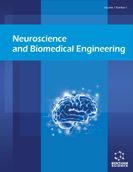Abstract
Background: Language is the ability to acquire and use complex systems of communication, and there are hundreds of different languages in the world, all of which have three elements: orthographic, semantic and phonologic. Scientists are always seeking to understand the essence of language and the relationship of the three elements as they interact in the brain.
Methods: In the last 20 years, functional magnetic resonance imaging (fMRI) has become one of the most popular methods to investigate the mechanism of brain patterns associated with language processing. We summarize the consequence of previous research in order to make a conclusion about the neural basis of three elements in language processing. Results: These three elements have not only common relative brain areas but also different specific brain regions. This overall structure can be summarized in most languages; however, in different languages, the specific brain areas are not the same. Furthermore, these differences are modulated by stimuli or language systems and so on. Conclusion: The difference is specific, but the commonality is absolute. In addition, the differences in the results that are associated with a variety of language studies are relative, and the diversity of forms of expression does not affect the nature of the language.Keywords: Language processing, fMRI, orthographic, semantic, phonologic, neuroimaging.
Graphical Abstract
 5
5

